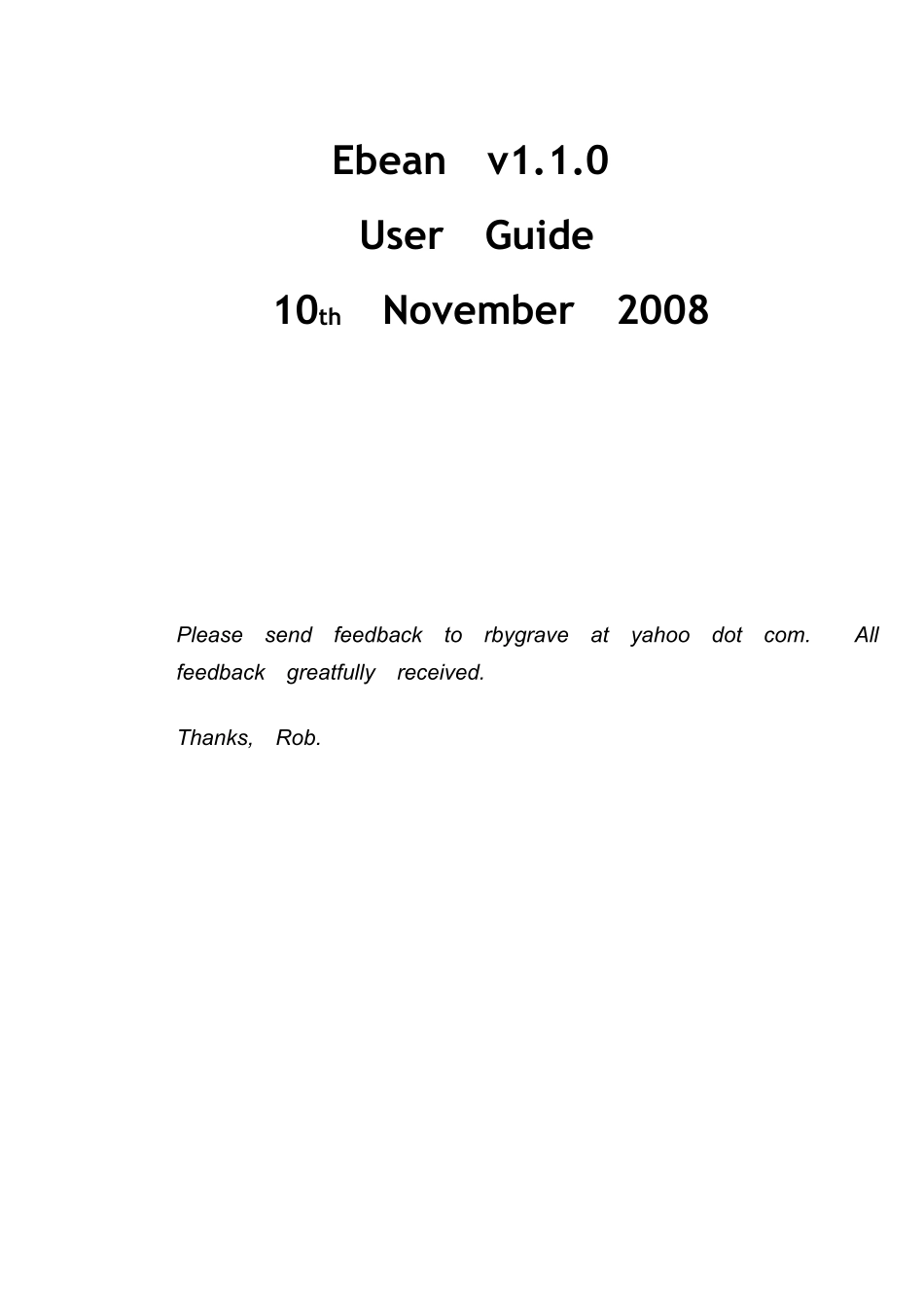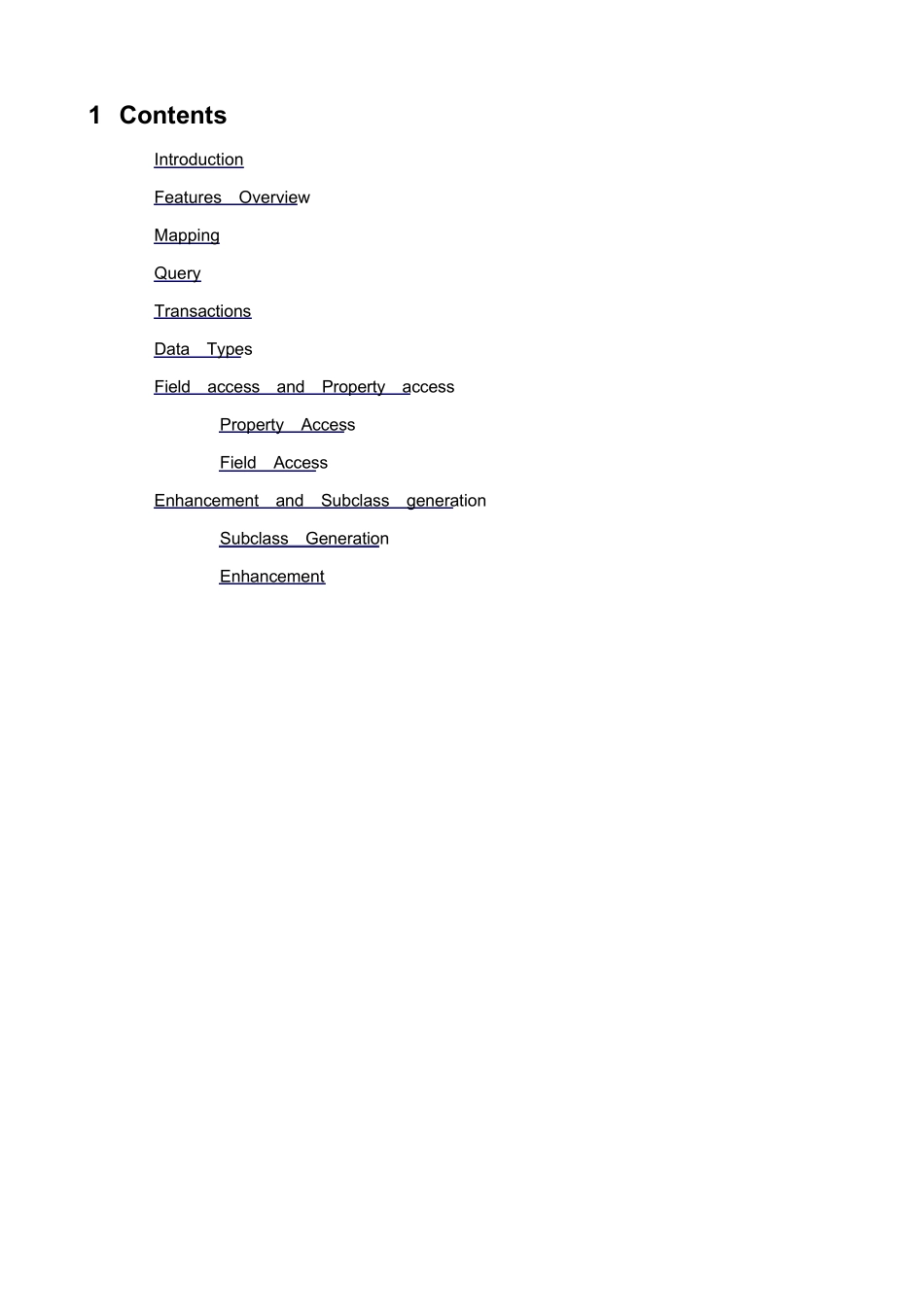Ebean v1.1.0 User Guide10th November 2008Please send feedback to rbygrave at yahoo dot com. All feedback greatfully received. Thanks, Rob.1 ContentsIntroductionFeatures OverviewMappingQueryTransactionsData TypesField access and Property accessProperty AccessField AccessEnhancement and Subclass generationSubclass GenerationEnhancement2 Introduction2.1 EbeanEbean is an open source Object Relational Mapping tool.It's goal is to provide a simpler alternative to JPA (Java Persistence API) implementations such as Hibernate and Toplink.It does this by providing a “sessionless” API and a simpler query language.That means: –No Session Object (or UnitOfWork or EntityManager)–No Attached or Detached Beans–No merge(), persist(), flush(), or clear(). Instead Ebean has save() and delete()I have found (so far) that this is a bit hard for many people familiar with JPA / Hibernate / Toplink etc to get their head around. The short answer is that Ebean, just like JPA has a Persistence Context but has some architectural differences to handle Extended Persistence Context in a different way.2.2 Why Ebean? ... why different from JPA?Ebean uses the JPA Mapping annotations and will follow those very closely.However, Ebean has been architected and built from a different perspective than JPA. The Architectural and Query Language differences are reasonably fundamental to both Ebean and JPA so its hard to see these differences going away anytime soon.It becomes a question of whether this different approach taken by Ebean has technical merit and has made Ebean an easier ORM to understand and use. 2.2.1 Architecture: Session / UnitOfWork / EntityManager JPA is architected to use an “EntityManager” which closely matches a Hibernate “Session”...


